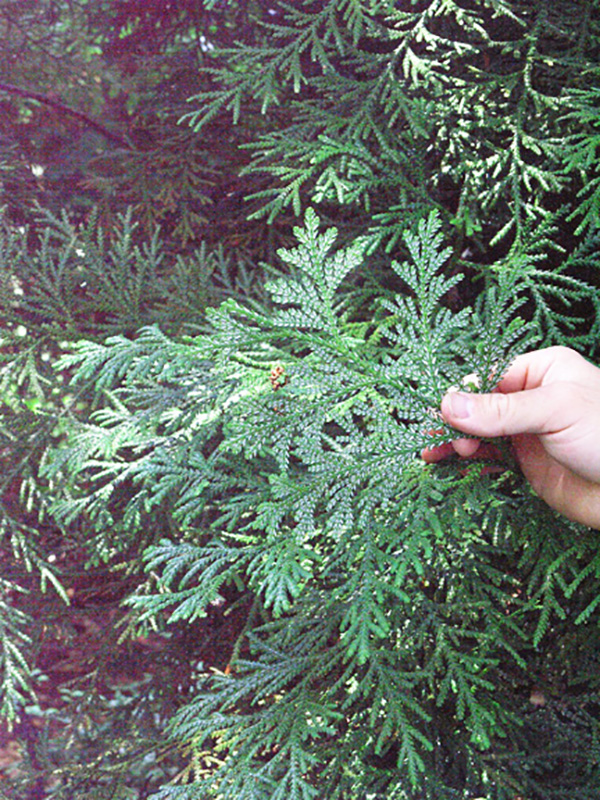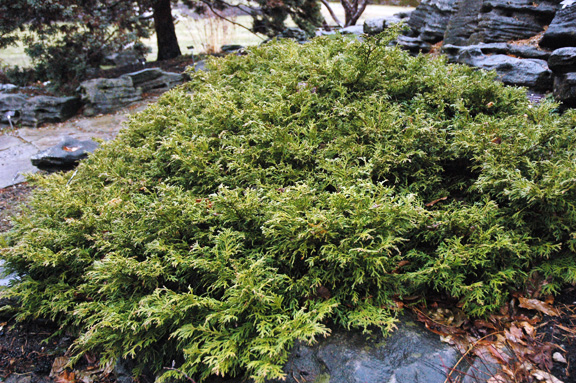Thujopsis dolabrata (False Arborvitae)
Michael's Opinion
Generally an attractive plant and interestingly the only species in the genus. Unfortunately, similar to a pretty but high maintenance friend. Like Dirr states, good for the collector, but not the common landscape.
Botanical Information
| Family | Cupressaceae |
| Genus | Thujopsis |
| Species | dolabrata |
| Category | Woody |
| Type | Shrub (evergreen) |
| Origin | From central Japan; introduced to North America in 1861. |
| Pronunciation |
Details
| USDA Hardiness Zone | 6b - 7a |
| USDA Hardiness Ref. | |
| Canadian Hardiness Zone | 6 |
| Canada Hardiness Ref. | |
| RHS Hardiness Zone | H6 |
| RHS Hardiness Ref. | |
| Temperature (°C) | -21 - (-15) |
| Temperature (°F) | -5 - 5 |
| Height | 9-15 m |
| Spread | 3-6 m |
| Growth | Slow |
| Flowering Period | March |
Description and Growing Information
| General Description | A dense, pyramidal evergreen with attractive foliage and bark colour. The only species in this genus and resembles Thuja. Mostly sought after by plant collectors rather than the average gardener. |
| ID Characteristic | Similar to Thuja but has round cones, winged seeds and larger leaves with white markings underneath. |
| Shape | Densely pyramidal, very nice form. Can be spreading and bushy. |
| Landscape | More for a collection; many other conifers have the same effect without the work. Regardless, a nice looking plant. |
| Propagation | Seeding is difficult; cuttings are almost 100% effective – even large forest trees are successfully propagated from cuttings. Cuttings taken in November can take 10 weeks to root; apply hormone and root in mist. |
| Cultivation | Easily transplanted from containers. Thrives in full sun and organic, moist, acidic soil; likes atmospheric moisture. |
| Pests | Relatively free, can be partial to bagworm, heart rot and spider mites. |
| Notable Specimens | The Gardens of Fanshawe College, London, Ontario, Canada. National Trust Trelissick Garden, Feock, near Truro, Cornwall, United Kingdom. |
| Habitat | Moist, Japanese forests with organic soil types; protected from wind. |
| Bark/Stem Description | Furrowed into thin strips that peel off, red–brown. Attractive when seen. |
| Flower/Leaf Bud Description | 2-3 mm long, yellow–orange. Ovate, imbricate. |
| Leaf Description | 4-7 mm long and 1-2 mm wide. |
| Flower Description | Not attractive looking. Aromatic, and monoecious. |
| Fruit Description | Cones an informal globe shape, 13-19 mm long; 6-8 thick, woody scales ending in horn shaped projections; winged seeds. |
| Colour Description | Foliage dark green on top, underside has a broad white stripe. Bark grey or red–brown. |
| Texture Description | Medium; soft foliage, mildly prickly fruit. |
Photographs
Thujopsis dolabrata, form, National Trust Trelissick Garden, Feock, near Truro, Cornwall, United Kingdom.

Thujopsis dolabrata, leaf, The Gardens of Fanshawe College, London, Ontario, Canada.
Thujopsis dolabrata, leaf, National Trust Trelissick Garden, Feock, near Truro, Cornwall, United Kingdom.
Thujopsis dolabrata, bark, National Trust Trelissick Garden, Feock, near Truro, Cornwall, United Kingdom.

Thujopsis dolobrata 'Nana'
Awards
